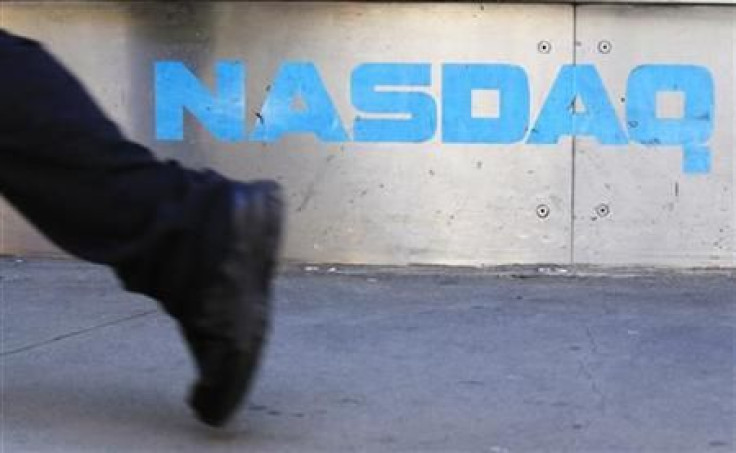Post-Market NASDAQ Movers (NATH, THOR, NLST, IRDM, DRYS, INAP, POWR, CLWR, BONT, PACB)

The top after-market NASDAQ Stock Market gainers are: Nathan's Famous, Thoratec, Netlist, Iridium Communications, and DryShips. The top after-market NASDAQ Stock Market losers are: Internap Network Services, PowerSecure International, Clearwire, Bon-Ton Stores, and Pacific Biosciences of California.
Gainers
Nathan's Famous Inc. (NATH) stock grew 9.91 percent to $20.97 in the after-market trading. The company said it will begin mailing to its stockholders on or about Dec. 8 a modified Dutch Auction tender offer to purchase for cash up to 500,000 shares of its common stock, $0.01 par value, at a price per share of not less than $20.00 nor greater than $22.00, for a maximum aggregate purchase price of $11 million. The closing price of the company's stock was $19.0999 on Dec. 2. The tender offer will commence on Dec. 8, and the company expects the tender offer will expire on Jan. 12, 2012 unless extended or withdrawn. The company plans to fund this tender offer with cash on hand. At Sept. 25, 2011, the company had about $15.2 million of cash and cash equivalents and $16.9 million of marketable securities. The company currently has 4.95 million shares outstanding.
Thoratec Corp. (THOR) stock gained 4.16 percent to $32.30 in the after-market trading. The company’s fifth-largest shareholder Oracle Investment Management Inc. sent a letter to Thoratec directors urging the board to hire an investment bank to conduct an auction to find an acquirer for the company, according to Reuters. Oracle Investment said it believes Thoratec will be unable to maximize shareholder value as an independent public company.
Netlist Inc. (NLST) stock increased 2.84 percent to $3.26 in the after-market trading. The shares closed Monday's regular trading up 10.84 percent at $3.17.
Iridium Communications Inc. (IRDM) stock gained 2.61 percent to $7.46 in the after-market trading.
DryShips, Inc. (DRYS) stock increased 2.42 percent to $2.54 in the after-market trading. The shares closed Monday's regular trading up 2.48 percent at $2.48.
Losers
Internap Network Services Corp. (INAP) stock fell 15.36 percent to $4.41 in the after-market trading. The shares closed Monday's regular trading up 2.36 percent at $5.21.
PowerSecure International, Inc. (POWR) stock declined 5.16 percent to $5.88 in the after-market trading. The shares closed up 3.33 percent at $6.20 on Monday.
Clearwire Corp. (CLWR) stock decreased 4.44 percent to $2.15 in the after-market trading. The company said it intends to offer $300 million of its Class A common stock in a registered public offering. Clearwire expects to grant the underwriters a 30-day option to purchase up to an additional $45 million of its Class A common stock. Sprint Nextel Corp. has agreed to exercise its pro rata preemptive rights with respect to the offering and that upon such exercise, Sprint will buy, in a separate, private transaction, only shares of Clearwire's Class B common stock and a corresponding number of Class B common interests in Clearwire's subsidiary, Clearwire Communications LLC. The company intends to use the net proceeds for general corporate and working capital purposes.
Bon-Ton Stores Inc. (BONT) stock declined 3.11 percent to $3.43 in the after-market trading. The shares closed up 15.69 percent at $3.54 on Monday.
Pacific Biosciences of California, Inc. (PACB) stock decreased 3.10 percent to $2.50 in the after-market trading. The shares closed Monday's regular trading down 5.49 percent at $2.58. Levi & Korsinsky is investigating potential claims on behalf of purchasers of the securities of Pacific Biosciences of California concerning possible violations of federal securities laws.
The investigation stems from allegations that Pacific Biosciences of California (PacBio) failed to disclose the following: that contrary to the company's claim that the RS system its used for DNA sequencing had a 'market dominating' 99.3 percent base calling accuracy rate, the system's raw-read accuracy rate was in fact between 80 and 84 percent; that as a result of PacBio's inefficient RS system, potential customers would be forced to sacrifice long read length time to obtain increased raw-read accuracy in DNA sequencing; that numerous bugs and flaws in PacBio's RS system caused it to crash frequently; and owing to the aforementioned problems, PacBio's RS system was receiving significant negative feedback.
© Copyright IBTimes 2024. All rights reserved.











